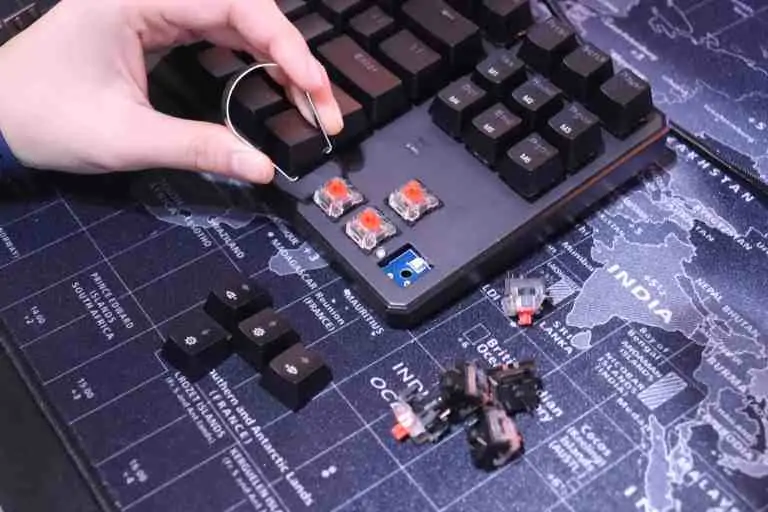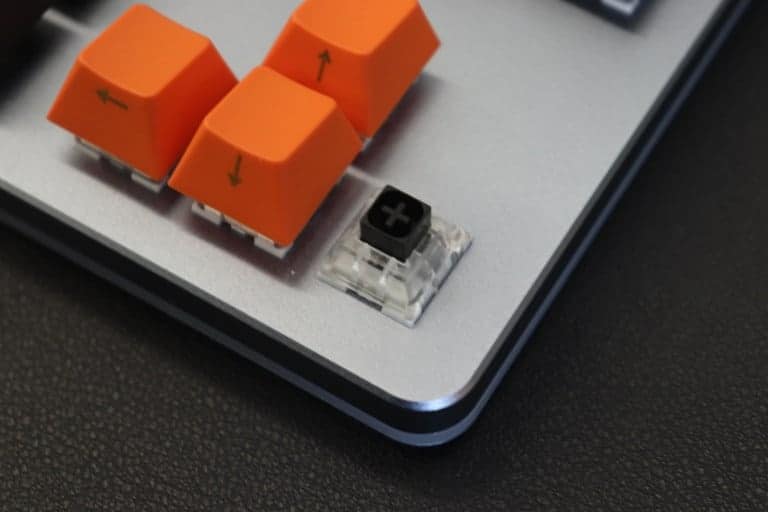
Switches can also be audible or inaudible. On the other hand, if you play a button-mashing game like Starcraft 2, or if you do a lot of typing, tactile feedback can be useful because you can press each key just lightly enough to register a keypress without ‘bottoming out’ the key and exhausting your fingers, and yet still know when each key has registered. If you do a lot of FPS gaming, a linear switch might be a safer bet, because WASD movement doesn’t benefit too much from tactile feedback with each keypress. Whether you should opt for a linear or a tactile switch comes down to personal preference, but there are a couple of things that you should bear in mind. While not radically different, the subtle differences in operation between the three switch-types can produce completely different experiences for keyboard users. This GIF shows the mechanical differences between three of the most common switch-types (Red, Brown, and Blue). If you can feel a ‘bump’ as the keypress registers, you have a tactile switch if you can’t, you have a linear switch. The design of each type of switch changes whether (and to what extent) you can physically feel the point at which the two metal contacts connect to register a keypress. Mechanical keyboards are either linear or tactile, and this corresponds to the colour of the switch being used. Keypresses on mechanical keyboards tend to feel quite firm in comparison to those on membrane ones. When you press the keycap down, the stem pushes against a spring (which adds the resistance) and when it reaches a certain point two metal contacts connect which registers a keypress – this is when the keypress ‘actuates’. Under each keycap is a plastic stem of a certain colour – for example, Red, Blue, or Brown. These keyboards feel quite squishy in comparison to mechanical ones.Ī mechanical keyboard, on the other hand, uses a spring and switch in place of a rubbery membrane. When you push a key down on a membrane keyboard, the keycap pushes a rubbery membrane down so that it connects to another underlying membrane, completing a circuit and registering a keypress. The keyboards that most people will have encountered aren’t mechanical, rather they’re membrane keyboards. Mechanical Keyboard Switches Chart What Are Mechanical Switches? But that doesn’t mean you can’t decide which one’s best for you, once you know what you’ll be getting for your money.ĥ.



Each has their own merits and their own drawbacks, so there’s no single best choice for everyone. The most popular kinds of switches are Red, Blue, and Brown ones. The kind of switch used can completely change the feel and sound of the keys under your fingers, so it’s important. There are many different kinds, and the main thing you should consider when deciding on your next mechanical keyboard is the type of switch that they use. When comparing mechanical vs membrane keyboards, mechanical switches are the clear winners when it comes to comfort, durability, and performance.īut it’s not as simple as buying the first mechanical keyboard you find. If you’ve spent any amount of time looking into which gaming keyboard you should buy to level up your gaming setup, you’ll have heard about mechanical keyboards. If you’re in the market for a new mechanical keyboard, but you’re not sure what style switch you should choose, in this post, we’ve highlighted the main differences between red, blue, and brown switches.


 0 kommentar(er)
0 kommentar(er)
